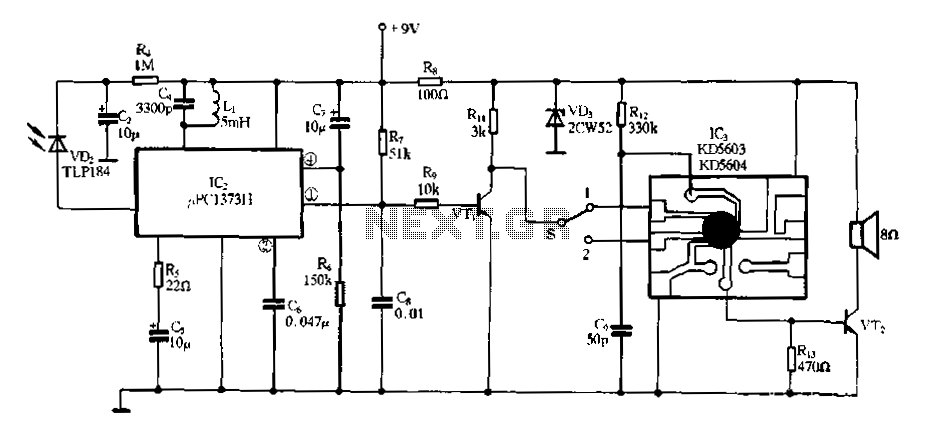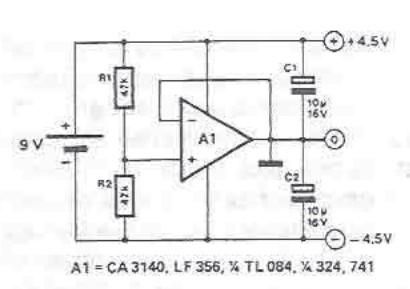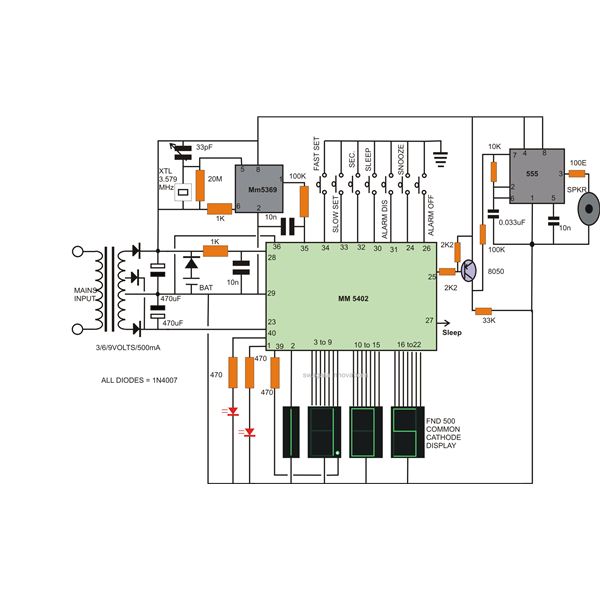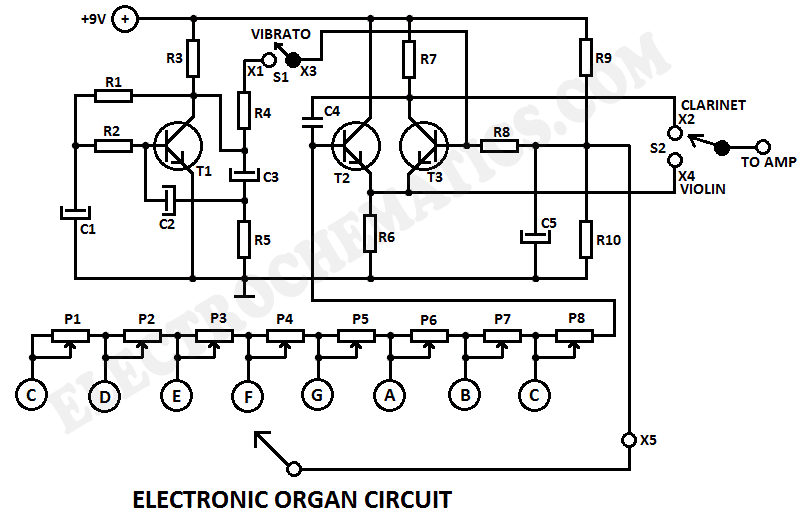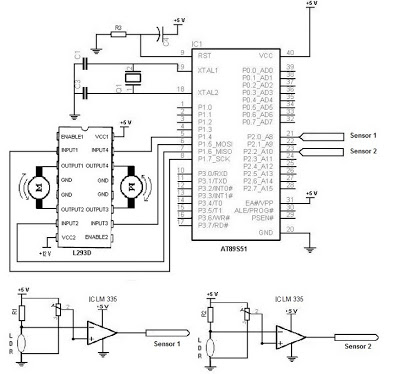
Electronic Combination Lock
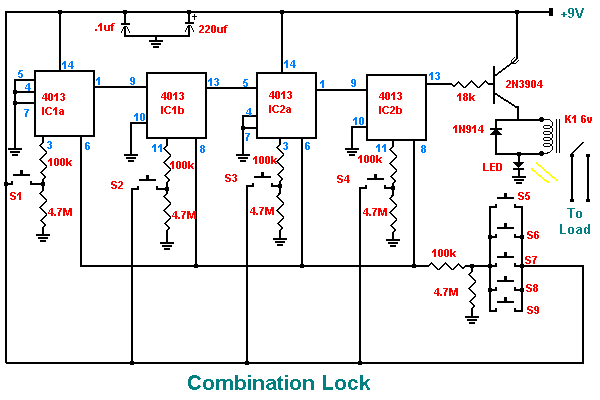
Electronic Combination Lock. This circuit is very basic to build. To open the lock, which is connected to the K1 Load, you must press each momentary switch in the correct sequence.
The electronic combination lock circuit provides a straightforward and effective method for securing access through a simple keypad interface. The circuit typically comprises a series of momentary push-button switches, each representing a digit in a predetermined code. When the correct sequence of buttons is pressed, the circuit activates a relay or a transistor switch, which in turn controls the K1 Load, allowing for the locking mechanism to be disengaged.
The design often includes a microcontroller that manages the input from the switches, comparing the pressed sequence against the stored combination. The microcontroller can be programmed to allow for a limited number of incorrect attempts, enhancing security by temporarily disabling the lock after a certain threshold is reached.
For implementation, the circuit requires a power supply, a microcontroller (such as an Arduino or PIC), and a relay module to handle the load. Each switch is connected to a digital input pin on the microcontroller, and pull-down resistors may be used to ensure stable readings when the buttons are not pressed.
In addition, visual or audible feedback can be integrated into the design, such as LEDs or buzzers, to indicate correct or incorrect inputs, further improving user interaction. The layout should be designed to minimize noise and interference, ensuring reliable operation in various environments.
Overall, this electronic combination lock circuit is an excellent project for beginners in electronics, providing hands-on experience with microcontrollers, input devices, and relay control systems.Electronic Combination Lock. This circuit is very basic to build. To open a the lock which is connected to the K1 Load you must press each momentary switch in the correct sequence. The. 🔗 External reference
The electronic combination lock circuit provides a straightforward and effective method for securing access through a simple keypad interface. The circuit typically comprises a series of momentary push-button switches, each representing a digit in a predetermined code. When the correct sequence of buttons is pressed, the circuit activates a relay or a transistor switch, which in turn controls the K1 Load, allowing for the locking mechanism to be disengaged.
The design often includes a microcontroller that manages the input from the switches, comparing the pressed sequence against the stored combination. The microcontroller can be programmed to allow for a limited number of incorrect attempts, enhancing security by temporarily disabling the lock after a certain threshold is reached.
For implementation, the circuit requires a power supply, a microcontroller (such as an Arduino or PIC), and a relay module to handle the load. Each switch is connected to a digital input pin on the microcontroller, and pull-down resistors may be used to ensure stable readings when the buttons are not pressed.
In addition, visual or audible feedback can be integrated into the design, such as LEDs or buzzers, to indicate correct or incorrect inputs, further improving user interaction. The layout should be designed to minimize noise and interference, ensuring reliable operation in various environments.
Overall, this electronic combination lock circuit is an excellent project for beginners in electronics, providing hands-on experience with microcontrollers, input devices, and relay control systems.Electronic Combination Lock. This circuit is very basic to build. To open a the lock which is connected to the K1 Load you must press each momentary switch in the correct sequence. The. 🔗 External reference
